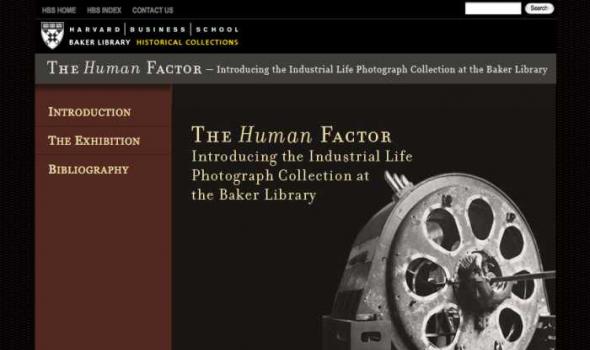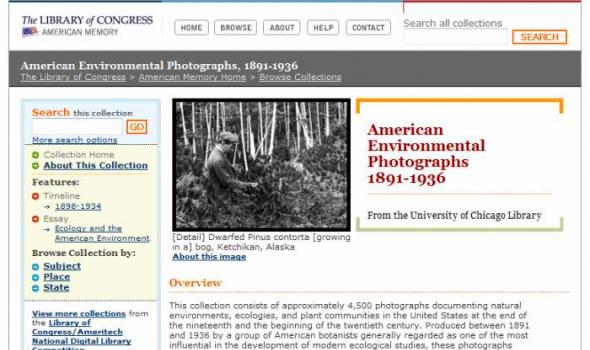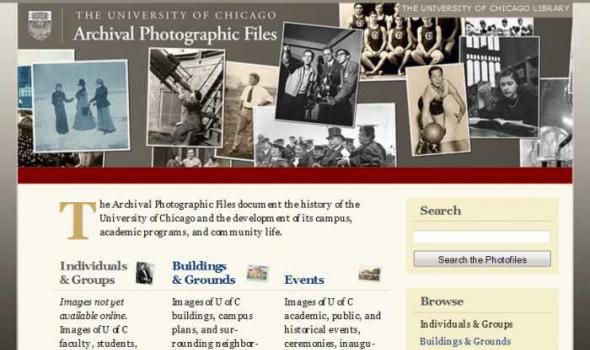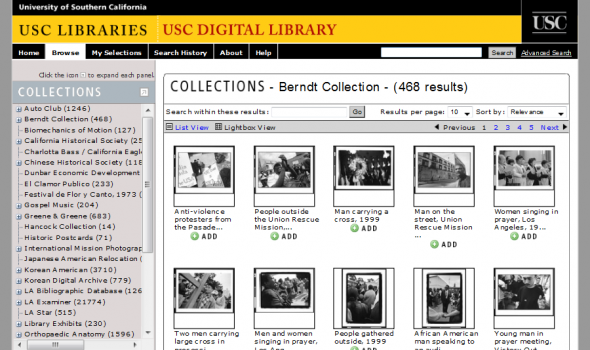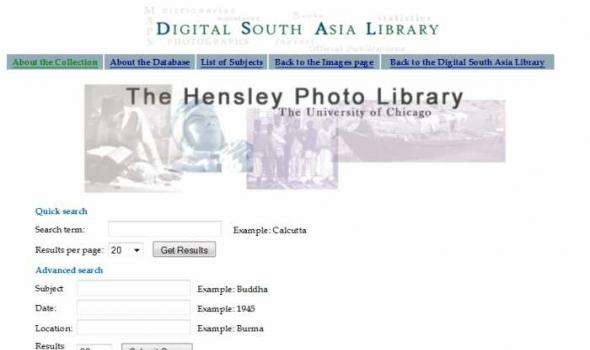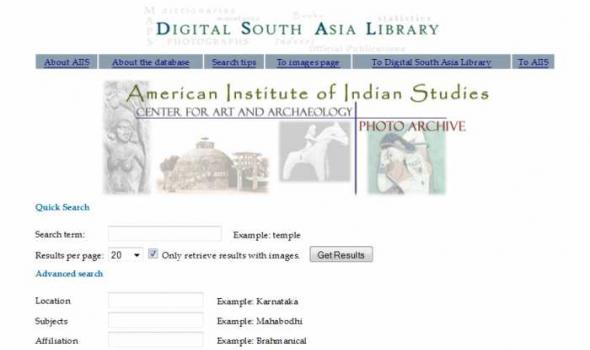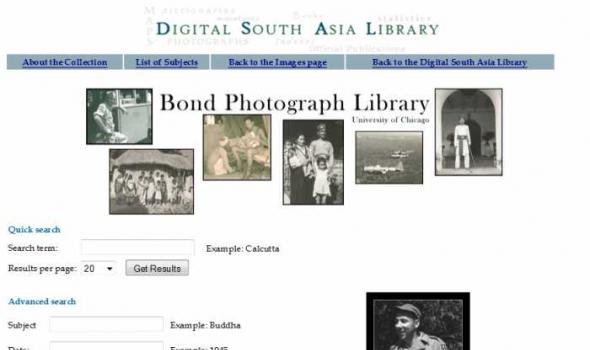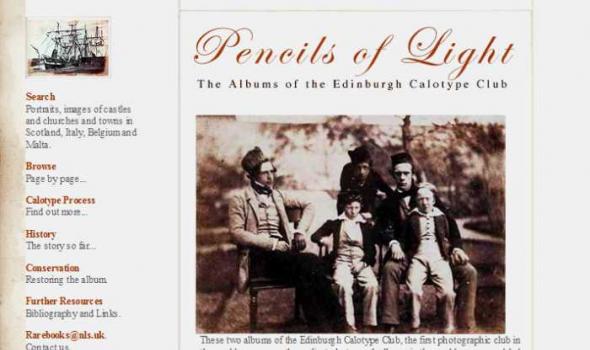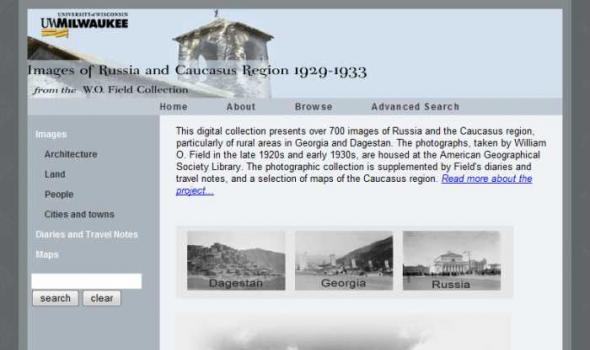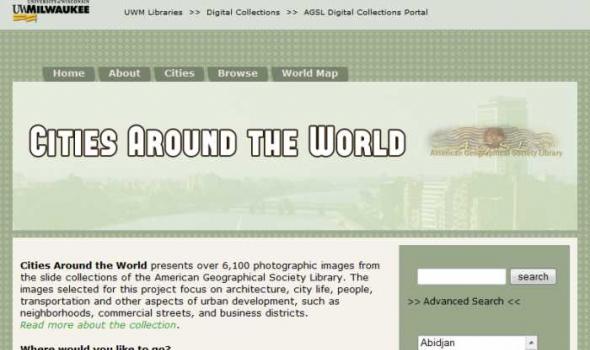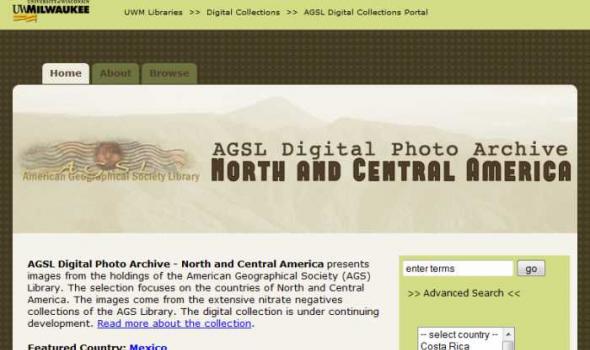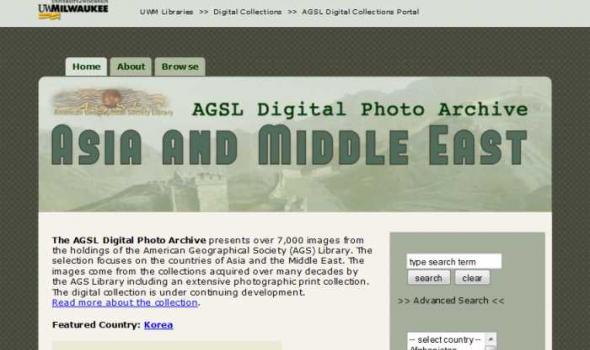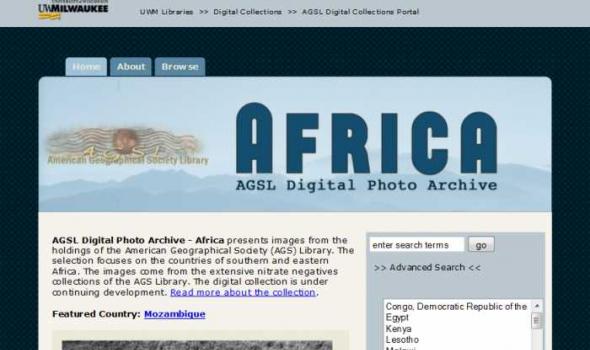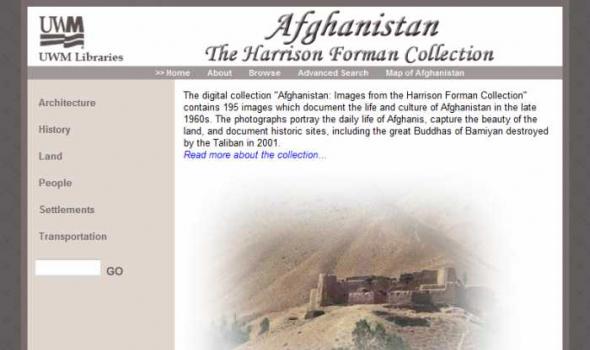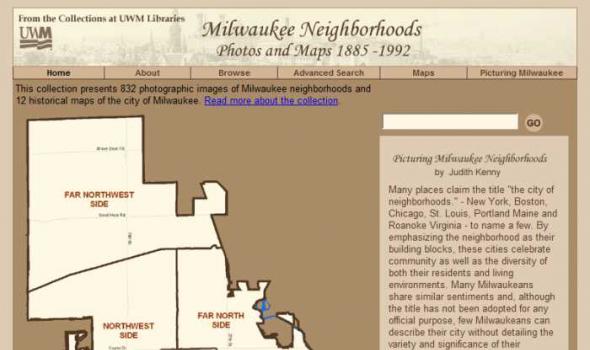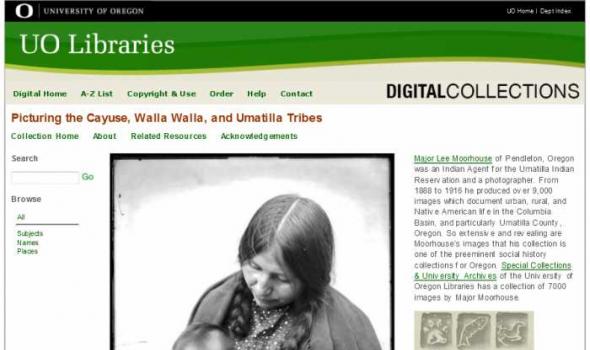Photography
Scope Daguerreotypes at Harvard provides access to over 3,500 daguerreotypes in libraries, museums, and archives across the University. The collection continues to grow as images are uncovered and new daguerreotypes are accessioned. The first publicly announced photographic medium, the daguerreotype process produced an image exquisite in its detail and tonal fidelity, and daguerreotypes remained popular throughout the 1840s and 50s. Together, Harvard holdings represent a collection of international significance and illustrate early uses of photography as a tool for artistic expression and scientific research in mid-19th-century America.
Introduction The Harvard-Yenching Library holds some 5,000 photographs and 10,000 negatives taken by Hedda Hammer Morrison (1908–1991) while resident in Beijing from 1933 to 1946. The photographs, mounted in thematic albums prepared by Mrs. Morrison, and the negatives, were bequeathed to the Harvard-Yenching Library, "the best permanent home for her vision of a city and people that she loved [Alastair Morrison]." All of the photographs contained in the 28 albums assembled by Hedda Morrison have been cataloged and digitized and can be viewed in VIA (Visual Information Access), the union catalog of visual resources at Harvard.
The Human Factor Introduction In the 1930s Harvard Business School colleagues Donald Davenport and Frank Ayres contacted leading businesses and requested photographs for classroom instruction—images Davenport hoped would “reveal the courage, industry and intelligence required of the American working man.” They amassed more than 2,100 photographs, from strangely beautiful views of men operating Midvale Steel’s 9,000-ton hydraulic press to women assembling tiny, delicate parts of Philco radios. Now students, and America’s aspiring corporate managers, had visual data to study “the human factor,” the interaction of worker and machine. But the pictures were more than documentary records.
American Environmental Photographs, 1891-1936 Browse Collection by: Collection Connection Classroom resources for teachers About This Collection The images in the American Environmental Photographs Collection were created by faculty, staff, and students in the Department of Botany at the University of Chicago from the 1890s to the 1930s. Among the most active photographers contributing to the collection were Henry C. Cowles, George D. Fuller, George E. Nichols, Charles J. Chamberlain, Ira B. Meyer, Paul J. Sedgwick, William J. Cribbs, and Ezra J. Kraus. The earliest photographs in the collection were taken in 1891 in the arid desert landscapes of California, Arizona, Utah, and Nevada.
T he Archival Photographic Files document the history of the University of Chicago and the development of its campus, academic programs, and community life. Individuals & Groups Images not yet available online. Images of U of C faculty, students, staff, alumni, administrators, donors, visitors as well as academic and administrative groups, classes, and departments. Buildings & Grounds Images of U of C buildings, campus plans, and surrounding neighborhoods including Hyde Park, Kenwood, and Woodlawn. Events Images of U of C academic, public, and historical events, ceremonies, inaugurations, reunions, and visits of notable individuals.
- Berndt Collection Collection Description Jerry Berndt Collection is a collection of 774 photographs shot by Jerry Berndt. These photographs were created under the auspices of Center of Religion and Civic Center(CRCC), USC. Jerry Berndt is an American photojournalist based in Paris. His photographs are included in the permanent collection of the Museum of Modern Art (New York), the Museum of Fine Arts (Boston), the International Center of Photography(New York York), and the Bibliotheque National (Paris). This collection consists of two subcollections: Gateway Cities Photography Project and Soul of Los Angeles Collection. . The Gateways Cities Photography Project.
About the Collection The Hensley Collection is comprised of photographs taken during World War II by an American serviceman, Glenn S. Hensley. The photographs, numbering almost 600, were given to the University of Chicago Library by the photographer. The text accompanying the images is derived from notes written by Mr. Hensley. The images include a rich array of photographs taken in Calcutta during 1943-44 by Mr. Hensley, a professional photographer participating in the surveillance of the Japanese in Burma for the U.S. Army. During his off-duty time Mr. Hensley used his ethnographer's eye to capture daily life in a number of locations around India. The majority of the images are from Calcutta and its environs.
About AIIS American knowledge of India is shaped by the American Institute of Indian Studies , a consortium of universities and colleges in the United States at which scholars actively engage in teaching and research about India. Since 1961, the Institute has provided fellowship support for scholars and PhD candidates in America. It has offered on-site training in Indian languages through the superb facilities of its Language Centers. And it has extended knowledge of Indian culture through its two Research Centers. As a member of the Council of American Overseas Research Centers (CAORC), AIIS's online photo archive is also linked as part of CAORC's Americal Overseas Digital Library (AODL). More than 5,500 scholars have received AIIS support.
The Bond collection consists of photographs taken during World War II by Frank Bond while serving in the Army Air Corps, 40th Photographic Reconnaissance Squadron, stationed in India and Burma. The squadron was formed in 1943 and transferred by sea to India in 1944. In India, the unit was assigned first to Gushkara, approximately sixty miles west of Calcutta, and then to the Alipore Air Base in suburban Calcutta. Bond was a specialist in the development of film from aerial photography that provided essential intelligence to the Allied forces during their advance through central Burma. As the campaign in Burma progressed, Bond was transferred to Akyab Island in the Bay of Bengal where he helped to establish the field photographic developing and printing laboratory.
These two albums of the Edinburgh Calotype Club, the first photographic club in the world, are among the earliest photograph albums in the world ever assembled. They contain over 300 images by a group of pioneering Scottish photographers working in Edinburgh and St. Andrews.
The Kirk Papers is a collection of photographs and papers belonging to East Africa pioneer Sir John Kirk. It was acquired for the National Library of Scotland in 1998/1999 with the help of a grant of £55,000 from the Heritage Lottery Fund.
Though not as well-known as his friend and fellow-explorer David Livingstone, Kirk was a trail-blazer of empire in East Africa and a man of eminence in his day. Born in Barry, Angus, in 1832, Kirk qualified in medicine at Edinburgh University and then volunteered for medical service in the Crimea. An accomplished botanist, zoologist and diplomat, he was also a talented photographer. This is evident from the collection of over 250 photographs, many of them stunning.
Edinburgh-born John Thomson (1837-1921) was one of the great names of early photography. His photographic legacy is one of astonishing quality and depth.
Thomson's images of China and South-East Asia brought the land, culture, and people of the Far East alive for the 'armchair travellers' of Victorian Britain.
He was one of the pioneers of photojournalism, using his camera to record life on London's streets in the 1870s. As a society photographer he also captured the rich and famous in the years before the First World War.
These pages present a brief introduction to Thomson's work, with examples drawn from the National Library of Scotland's collections.
Scope and Content Images of Russia and Caucasus Region 1929-1933 presents over 700 images of Russia and the central Caucasus including the Republic of Georgia and Dagestan from the William O. Field Collection housed at the American Geographical Society Library. The photographic collection is supplemented by Field's diaries and travel notes, and a selection of maps of the Caucasus region. William O. Field (1904 - 1994), geographer, pioneer glaciologist, and a member of the American Geographical Society visited the Soviet Union three times between 1929 and 1933. During his first trip in 1929, Field traveled to Svanetia, a remote region in Georgia, located in the southern part of the Central Caucasus.
Scope and Content Cities Around the World presents over 6,100 photographic images from the slide collections of the American Geographic Society Library. The images selected for this project focus on architecture, city life, people, transportation and other aspects of urban development, such as neighborhoods, commercial streets, and business districts. The pictures were taken by two photographers, Harrison Forman and Harold Mayer between 1942 and 1994. The digital collection provides access to photographs of over 450 cities worldwide. In addition to present-day metropolitan areas, this collection also features ancient cities and deserted settlements, including Carthage, Great Zimbabwe, Machupicchu, and Persepolis.
Scope and Content AGSL Digital Photo Archive - South America presents a selection of images from the extensive photographic holdings of the American Geographical Society (AGS) Library. The images were selected from several collections including the American Geographical Society Library Print Collection, the Edna Schaus Sorensen and Clarence W. Sorensen Collection, the Richard U. Light and Mary (Light) Meader Collection, the Isaiah Bowman Collection, and the Theodoor deBooy Collection. The current selection of the AGSL Digital Photo Archive - South America focuses on the countries of South America. The coverage of this digital collection will expand as more photos are added to the site.
Scope and Content The Digital Project Credits The AGS Library and UWM Libraries are grateful for continuing material support for the Digital Photo Archive project from Suzanne and Dr. Robert McColl. Project Staff: Krystyna K.
AGSL Digital Photo Archive presents a selection of images from the extensive photographic holdings of the American Geographical Society (AGS) Library. The images were selected from several collections including the American Geographical Society Library Print Collection, the Harrison Forman Collection, the Robert W. McColl Collection, the Bert Krawczyk Collection, the Edna Schaus Sorensen and Clarence W. Sorensen Collection, and the Helmut de Terra Collection.
Scope and Content AGSL Digital Photo Archive - Africa presents a selection of images from the extensive photographic holdings of the American Geographical Society (AGS) Library. These images were selected from the Richard U. Light and Mary (Light) Meader Collection. This digital collection contains approximately 1080 images from Mary Upjohn Light's aerial photography in 1937-38. Mrs. Light (who later married Dr. Edwin Meader) was an adventurous aerial photographer who flew with Dr. Richard Upjohn Light, a geographer and pilot, over the continents of South America and Africa. They were the first to produce aerial photographs of these continents. Some of the first aerial photographs of the pyramids in Egypt are present in the Light/Meader Collection of negatives.
About the Collection Scope and Content The online collection Afghanistan: Images from the Harrison Forman Collection documents the life and culture of Afghanistan in the late 1960s, several years before the civil unrest of the 1970s and 80s, the Soviet invasion, and the Taliban rule. The photographs, taken by Harrison Forman in 1969, portray the daily life of Afghanis, capture the beauty of the land, and document historic sites, including the great Buddhas of Bamiyan destroyed by the Taliban in 2001. The online collection consists of 195 images selected from a set of 733 slides of Afghanistan in the Harrison Forman Photographic Collection housed in the University of Wisconsin-Milwaukee Libraries' American Geographical Society (AGS) Library.
NEH Grant Project: Saving and Sharing the AGS Library's Historic Nitrate Negative Images With generous support from the National Endowment for the Humanities (NEH), the American Geographical Society Library of the University of Wisconsin-Milwaukee Libraries (AGSL) has been able to institute a two-year, $315,000 grant project. Our NEH grant project "Saving and Sharing the AGS Library's Historic Nitrate Negative Images" began in May 2010. The scope of the project is to re-house, scan, create metadata for, and preserve on a long-term basis, the approximately 68,000 nitrate negatives in its photography collection. The ultimate goal of this effort is to provide universal access to this rich resource over the Internet.
About the Collection This digital collection presents over 90 photographs taken by Harrison Forman at the outbreak of World War II in Poland. The photographic collection is supplemented by a selection of newspaper clippings and an article "Filming the Blitzkrieg," published by Forman in Travel magazine in December 1939. The photographs, documenting the Nazi invasion of Poland in September of 1939, were recently discovered in the American Geographical Society Library at the UWM Libraries. The images are part of the extensive Harrison Forman Collection that was donated to the American Geographical Society Library in 1987. Harrison Forman (1904-1978), a Wisconsin native, was an adventurous journalist, photographer, and explorer.
About the Collection Milwaukee and Art Work of Milwaukee Milwaukee Neighborhoods: Photos and Maps 1885 - 1992 presents images of Milwaukee neighborhoods from the Far Northwest Side to the Far South Side. The selection of images is limited by the current boundaries of the city of Milwaukee. The digital collection provides a visual documentation of the development of the city of Milwaukee from the mid-1880s to the early 1990s. It includes images of residential and industrial facilities, local businesses, historic buildings, churches, and numerous Milwaukee parks.
Scope and Content The digital collection includes 1,800 images documenting 195 performances. The images were selected from the Mark Avery Collection housed at the Archives at the University of Wisconsin-Milwaukee Libraries (UWM Libraries). The finding aid for the archival collection can be found at: http://digital.library.wisc.edu/1711.dl/wiarchives.uw-mil-uwmmss0155 . Mark Avery worked as the staff photographer for the Milwaukee Repertory Theater Company from 1976 to 1994.
About the Collection To commemorate UWM's 50th anniversary, the UWM Libraries prepared a digital collection of photographs documenting the history of UWM and its predecessor institutions, the Wisconsin State College, Milwaukee (formerly the Milwaukee State Teachers College) and the University of Wisconsin Extension Center at Milwaukee. The digital collection assembles images physically located in three separate collections: the George M. Richard photographs of UWM collection (UWM Manuscript Collection 167); the UW-Milwaukee Photographs Collection (UWM Archival Collection 6); and the UWM Dept. of Theatre and Dance records (UWM Archival Collection 85). George M.
About - Doris Ulmann Photographs About the Doris Ulmann Collection Doris Ulmann (1882-1934) was born and educated in New York City. A graduate of the school of the Ethical Culture Society, a socially liberal organization that championed individual worth regardless of ethnic background or economic condition. Ulmann continued her education at the Columbia University Teacher's College, where she met and studied with photographer Clarence H. White. White was a founding member of Alfred Stieglitz's Photo-Secession and a leader in the Pictorialist movement. When her teacher founded the Clarence H.
The Collection The 102 photographs in this collection document the activities of Oregon's Bracero workers - their cultivation and harvesting work in the fields and orchards as well as the farm labor camps in which they lived. Most of the photographs were taken by Oregon State College Extension staff members as part of a larger effort to document the various groups that contributed to alleviate the state's severe shortage of farm labor. Extension photographers included John Burtner, Fred Shideler, Robert Fowler, and Harry Whitten.
About - Historical Photographs Working in concert with Metadata Services and Digital Projects , staff in Special Collections & University Archives selected several representative photographic collections for digitization and online display. Selection criteria were based on several factors, including the historic content of the photographs, the pure visual appeal of individual images, and finally, research requests from the past. The larger goal of the University of Oregon Photograph Collection is to make the public aware of the quality and depth of the photograph collections owned by Special Collections & University Archives and to encourage further research on the original photographic materials.
Leslie Jones worked for the Boston Herald-Traveler newspaper between the years 1917 and 1956. He was educated at the Farm and Trade School on Thompson Island. Jones first worked as a pattern-maker, but had long held an interest in photography. While working in a Boston factory, he continued developing himself as a freelance photographer. It was not until Jones unfortunately lost two of his fingers to the factory machinery, however, which led him to convert this avocation into his profession. He joined the Boston Herald-Traveler staff in 1917.
About - Lesbian Intentional Communities: Ruth Mountaingrove Photographs The Ruth Mountaingrove Papers include textual and graphical materials. The collection is currently arranged into four series, beginning with correspondence, diaries, ephemera and finally, photographs. The photograph series (Series IV) is currently the only series within this collection that is processed and available for research use. Ruth's photographs depict her life on lesbian land, and as a member of the national feminist/lesbian network.
About - Picturing the Cayuse, Walla Walla, and Umatilla Tribes Major Lee Moorhouse of Pendleton, Oregon was an Indian Agent for the Umatilla Indian Reservation and a photographer. From 1888 to 1916 he produced over 9,000 images which document urban, rural, and Native American life in the Columbia Basin, and particularly Umatilla County, Oregon. So extensive and revealing are Moorhouse's images that his collection is one of the preeminent social history collections for Oregon. Special Collections & University Archives of the University of Oregon Libraries has a collection of 7000 images by Major Moorhouse.


